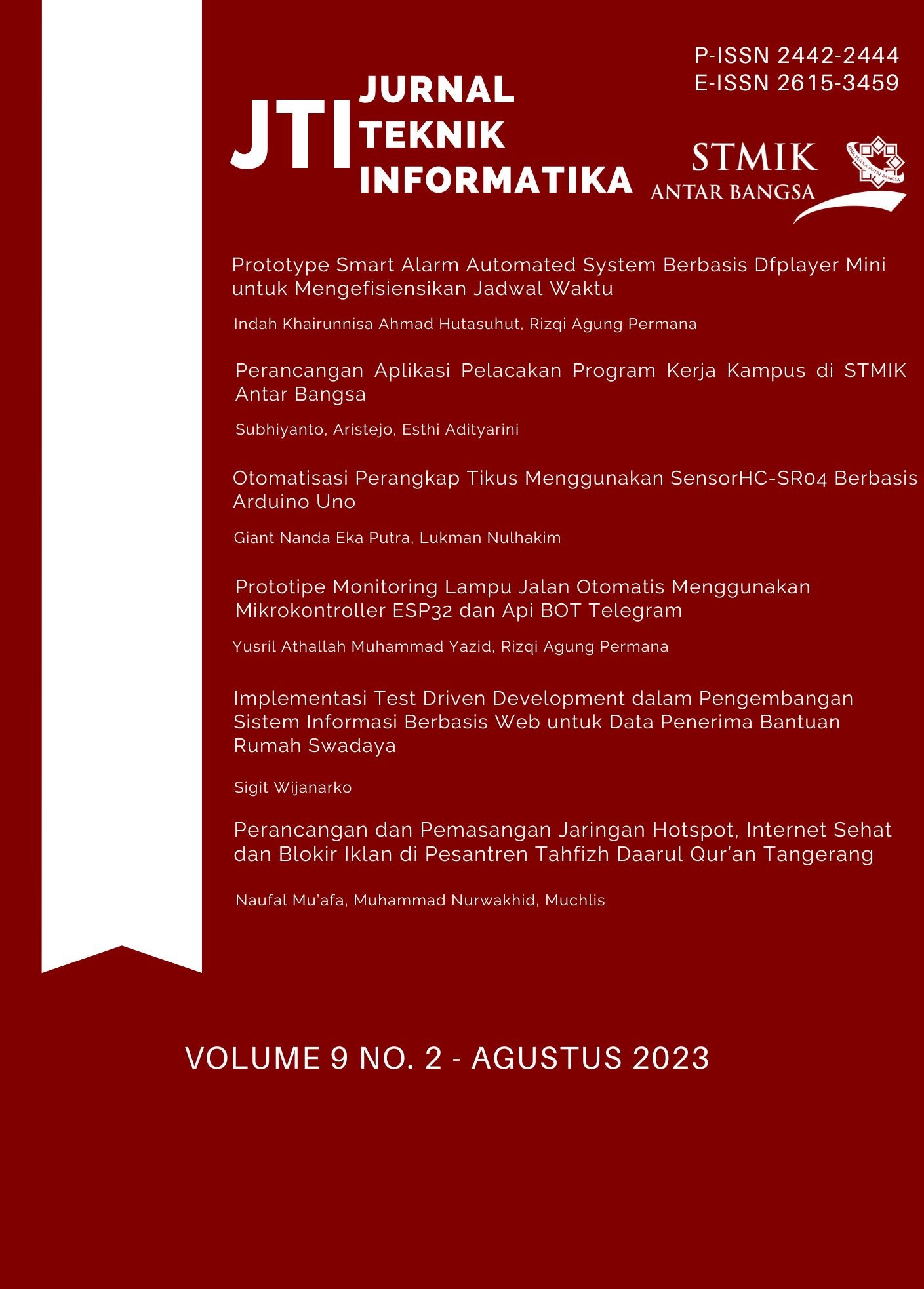Otomatisasi Perangkap Tikus Menggunakan Sensor HC-SR04 Berbasis Arduino Uno
DOI:
https://doi.org/10.51998/jti.v9i2.543Abstract
Rats are animals that play a human pest and enemy, especially in the home environment. In addition to frequently eating foodstuffs that are in the house, the droppings of these rats can also bring about various diseases. Making automatic mouse trap tools is a solution to these problems, The stages used are system design, electronic design and build design. The components used are Arduino Uno R3, ultrasonic sensor HC-SR04 and micro servo This tool has a work system in the form of an ultrasonic sensor HC-SR04 as a rat detector, The floor trap will be moved by Arduino uno with the help of micro servo.
Downloads
Downloads
Published
How to Cite
Issue
Section
License
Copyright (c) 2023 Giant Nanda Eka Putra, Lukman Nulhakim

This work is licensed under a Creative Commons Attribution 4.0 International License.








